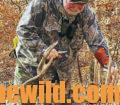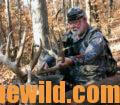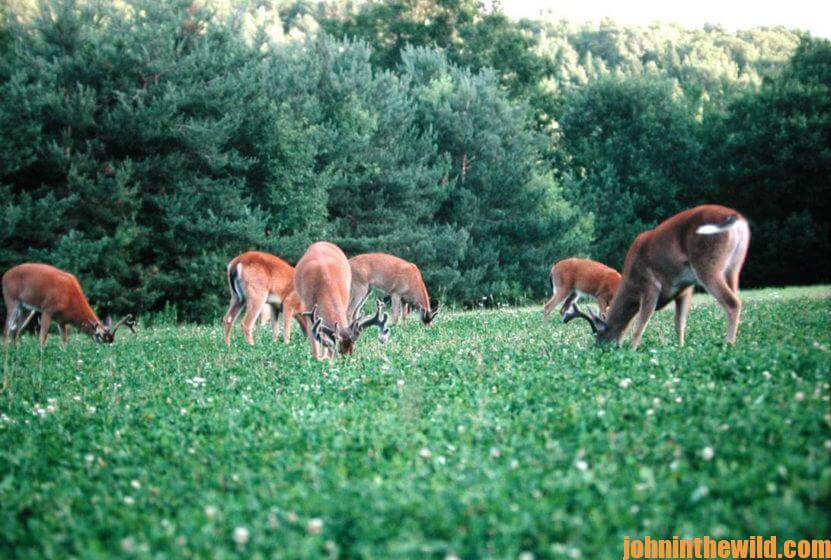Editor’s Note: Two of the nation’s most-legendary deer hunters in recent years are 70+-year-old Gene and Barry Wensel from Iowa. Their webpage is titled Brothers of the Bow http://www.brothersofthebow.com, because they are twin brothers, and they both deer hunt with bows. Gene has written many magazine articles and several books on deer hunting. Barry and Gene were two of the early pioneers who taught deer hunting at seminars and consumer shows all over the country and promoted bowhunting for deer, starting in the 1970s.
I’ve hunted a lot of really-tough bucks. One misconception that many hunters have is that the older a buck is or the bigger his antlers, the smarter that buck is, but that is not necessarily true. Each deer, buck or doe, is an individual. Just like some people have higher IQs than other people, primarily because of genetics, I’ve hunted some bucks much smarter than me. I’ve hunted some big bucks that aren’t very smart at all. So, age and antler size don’t necessarily equate to a buck’s ability to dodge hunters. The antlers of some of the smartest bucks that live to be in the older-age-classes only may score 120 inches, due to their genetics dictating how big or how small their antlers will be.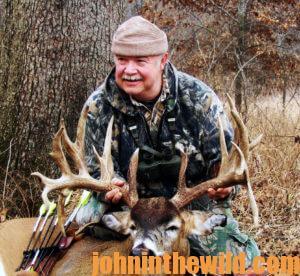
Another thing that’s important to the growth of bucks and their antlers is the availability of food. If a buck doesn’t have a high level of nutrition, growing big antlers will be hard for him. The third factor impacting the size of a buck is hunting pressure. If the majority of bucks on the land that you hunt are taken when they’re 1-1/2- or 2-1/2-years old, chances of finding a mature, big buck will be slim on that property. To be honest, the toughest bucks I ever hunted that I haven’t taken have been just too smart.
I guess the most-satisfying buck I ever took was also one of the most-difficult bucks I ever took. I put a lot of time and effort into harvesting this buck, and other extenuating circumstances made this buck a really-hard buck to hunt. This giant’s name was Woody. He scored 231 inches and was probably one of the biggest bucks taken in the United States in 2004. I know for certain that there were two poachers trying to take Woody, and both of them were using night-vision cordless spotlights to hunt him. I can’t believe they didn’t take Woody.
I was out scouting early in September, 2003, and spotted Woody just at the crack of dawn in the back corner of a green field. The next morning, I hunted Woody with a video camera, because the season hadn’t arrived. I got some good video footage of him. Then Woody disappeared. I didn’t see him again during the entire 2003 deer season, and I didn’t find his shed antlers. My brother Barry got a shot at him in 2003 but missed him. During that 2003 season, I could have taken Woody  during gun season, but I don’t hunt with a gun. So, I didn’t get a shot at him. I often heard shots in the distance where I knew Woody lived. When I would go back to camp, I couldn’t sleep at all those nights, thinking someone else might have killed Woody.
during gun season, but I don’t hunt with a gun. So, I didn’t get a shot at him. I often heard shots in the distance where I knew Woody lived. When I would go back to camp, I couldn’t sleep at all those nights, thinking someone else might have killed Woody.
Another factor that made this buck tough to hunt was that there were other people that had permission to hunt the same land I was hunting. In late December, 2004, I just had returned from a hunt down in Texas with the good folks at Mossy Oak (https://www.mossyoak.com/). I decided to go out and take Woody, if he was still on the property. I had missed Woody the first time I hunted him in 2004. When Woody came by my tree stand at this end of December hunt, I was ready to take him. I drew back and aimed, but my arrow hit a limb and landed behind him. So, Woody was spooked, but I was convinced he didn’t know what had spooked him. He’d just heard something hit the ground behind him. The next day, December 30, 2004, I went back to the same stand. A friend of mine also wanted to go to the property and hunt for shed antlers that day. Since some of our deer started shedding their antlers around December 16, this friend was hoping to find some freshly-shed antlers. He actually was one of the factors that enabled me to take Woody. Having a favorable wind, the right terrain, a soybean field close to my stand and very good luck were the other factors that came together to help me take Woody.
On this particular farm, the farmer had let some late-season soybeans that he didn’t cut but let stay in the field. Deer love to eat standing soybeans when the weather’s cold, and/or when snow is on the ground. Woody was targeting this food source. On the other side of my tree stand, the adjoining landowner had left some standing corn, which the deer began eating once there were no 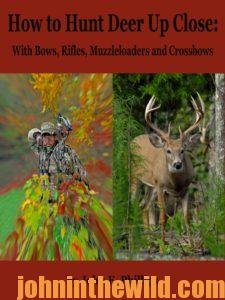 more soybeans. I felt sure that Woody was bedding on the farm where I had permission to hunt. When we went to the farm on December 30, 2004, I told my buddy, “I’m going to be in a tree stand hunting with my bow in that funnel area between the soybean field and the standing corn field. If you’re going to hunt shed antlers, go about 400 – 500 yards down from me and look for antlers in the woods. Please don’t come close to where I’m hunting. The place where I’ve suggested you hunt shed antlers is where I’ve seen Woody before. If you get too close to him, he’ll probably come sneaking out of that bedding area.” Later, my buddy told me, “While I was hunting shed antlers, I spotted Woody moving through the timber.” My friend didn’t jump Woody, but probably his human odor and/or the sound of him walking through the woods caused Woody to get out of his bed and start moving toward me. Woody wasn’t by himself that day. He was with three other shooter bucks. I was set-up in a drainage, and I knew this was a place where Woody spent a lot of time. I just happened to be in the area where Woody wanted to be after he got up out of his bed, and I took him with my bow.
more soybeans. I felt sure that Woody was bedding on the farm where I had permission to hunt. When we went to the farm on December 30, 2004, I told my buddy, “I’m going to be in a tree stand hunting with my bow in that funnel area between the soybean field and the standing corn field. If you’re going to hunt shed antlers, go about 400 – 500 yards down from me and look for antlers in the woods. Please don’t come close to where I’m hunting. The place where I’ve suggested you hunt shed antlers is where I’ve seen Woody before. If you get too close to him, he’ll probably come sneaking out of that bedding area.” Later, my buddy told me, “While I was hunting shed antlers, I spotted Woody moving through the timber.” My friend didn’t jump Woody, but probably his human odor and/or the sound of him walking through the woods caused Woody to get out of his bed and start moving toward me. Woody wasn’t by himself that day. He was with three other shooter bucks. I was set-up in a drainage, and I knew this was a place where Woody spent a lot of time. I just happened to be in the area where Woody wanted to be after he got up out of his bed, and I took him with my bow.
To learn more about hunting deer, check out John E. Phillips’ book, available in Kindle, print and Audible versions, “How to Hunt Deer Up Close: With Bows, Rifles, Muzzleloaders and Crossbows” (http://amzn.to/11dJRu8). You may have to copy and paste this click into your browser. (When you click on this book, notice on the left where Amazon allows you to read 10% of the book for free).
Tomorrow: Gene Wensel Advises Hunters How to Take Big Bucks

